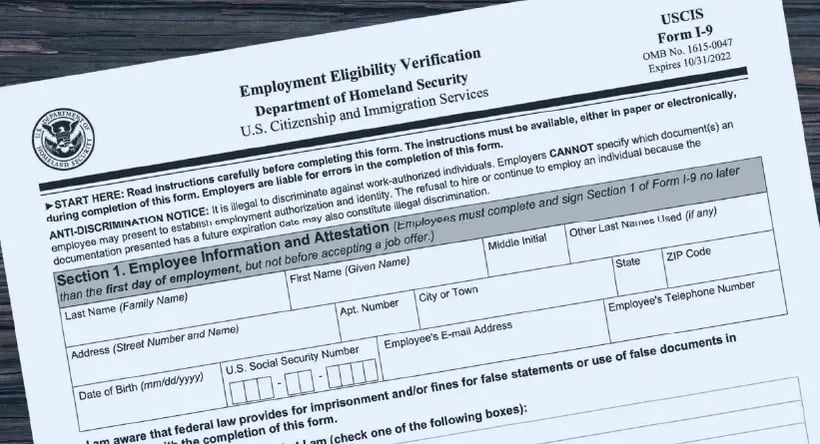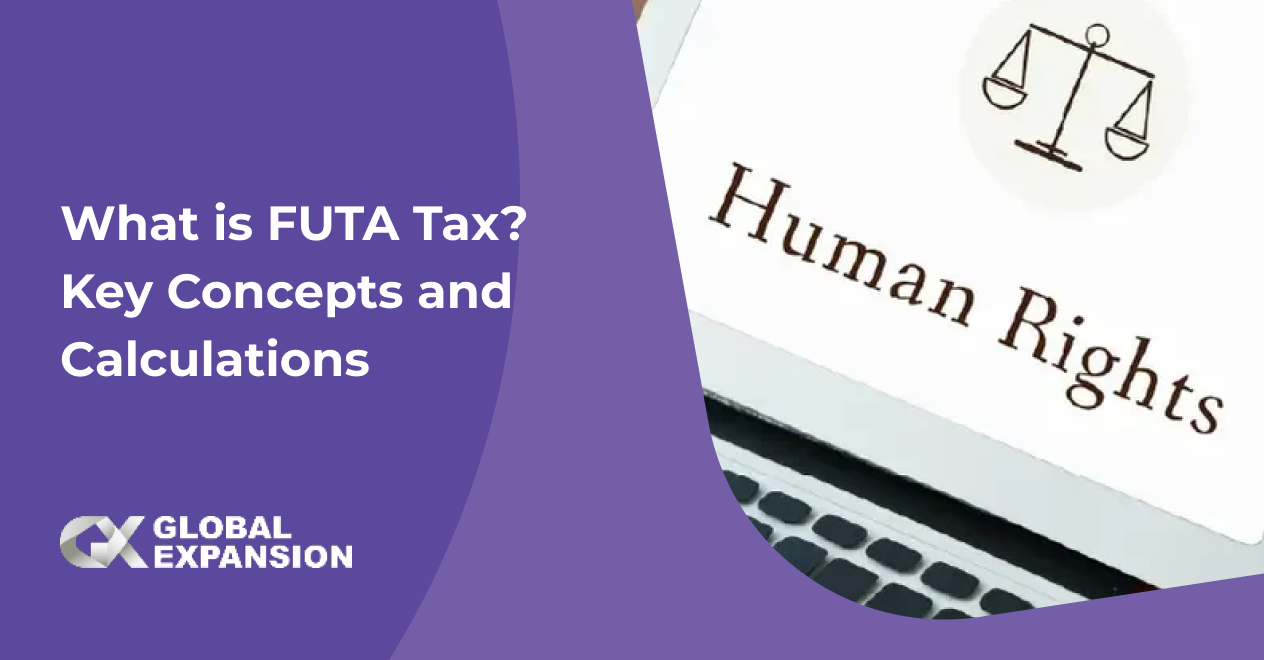What is i-9 Remote verification? All You Need to Know

Image caption here
Employment in the United States is subject to verification of identity and work authorization through a legal document, Form I-9. Every employer has to establish the identity of the new hires and comply with it, irrespective of the business type and size.
This comprehensive article helps you understand what I-9 remote verification is, how it works, its benefits, best practices for compliance, and how to avoid common errors related to it.
What is an I-9 form?
The employers and employees must fill out form I-9 to ensure fair and legally valid employment status. It helps businesses stay compliant with immigration laws.
I-9 remote verification establishes an individual's identity and employment authorization in the country. Keeping businesses compliant with immigration laws and preventing illegal hiring are two of its benefits. This process keeps organizations compliant with the local laws and prevents any chances of illegal hiring practices.
How does I-9 completion work?
Filling out our Form I-9 is compulsory for new hires as they join any organization in the US on or before their first day of employment for pay. It has different sections, in which Section 1 is filled out by the employee, containing:
- Name
- Address
- Date of birth
- Social Security number
- Citizenship status
The employer completes Section 2 once the employee completes Section 1 of the form within three business days of the date of employment. The employer must physically examine all the relevant documents to ensure that the identity and the work authorization are valid.
The I-9 form specifies acceptable documents for proving identity work authorization.
The I-9 form has specific requirements to fill out, failing which may lead to heavy penalties for employers, including criminal charges and fines. Additionally, it may deter the company reputation of the business and may lead to termination of the employee’s ability to sustain work authorization or even termination of employment.
Form I-9 Best Practices:
Adopting some best practices to manage the I-9 form can help ensure accuracy and avoid potential penalties. You may consider some key tips in mind, including:
Staying Updated with Laws:
Global immigration laws are ever-evolving. A significant change in the US immigration laws is usual. So, staying informed about the new updates or revisions concerning form I-9 compliance is a must to remain compliant.
Keep Records Safely:
Retain all the completed I-9 forms in a safe and secured location as required by law and maintain the confidentiality of the data while ensuring accessibility during audits or inspections.
Conduct Training Sessions:
It is important to arrange proper and detailed training programs for the HR teams on how to complete and verify Form I-9 correctly. It may support them in understanding compliance requirements and prevent potential common errors.
Create a Standard Process:
It is important to establish a consistent form of the I-9 process for every new hire. A simple step-to-step process helps with minimum errors and consistency across the process and makes the company compliance-friendly.
Conduct Regular Audits:
It is also important to regularly review your completed form I-9s for completeness and accuracy. This enables you to identify key issues before they cause major problems during an external audit or inspection.
Adapt technologically advanced systems:
Use digital platforms designed for managing and storing documents electronically. It helps streamline the process, reduce common errors, improve overall compliance efforts, and improve efficiency.
Keeping compliant records is essential when it comes to meeting immigration-related matters, such as form I-9s. Incorporating these practices into your process can navigate the compliance needs seamlessly.
How to Fill Out an I-9 Form?
Steps to filling out Section 1 (Employee)
The employee must fill out their full name and contact details and attest to their citizenship or immigration status.
- The employee must also attach the relevant document that establishes their identity and work authorization.
- The employee may choose any of the listed items on the form to establish their identity and work authorization.
- The employee must sign and date the document.
Steps to filling out Section 2 (Employer)
Section 2 is filled out by the employer. Employers must complete Section 2 within three working days of the joining of the new hire.
- The hiring teams should physically examine and verify the documents provided by the employee for authenticity and completeness.
- The employer must keep the document information with him, including document type, expiration date, and issuing authority.
- The employer must sign and date Section 2.
Steps to filling out Section 3 (Employer, as needed)
Section 3 is used in cases of rehiring and re-verification of employees with expiring employment authorization.
- Employers must complete Section 3 when required and keep it with the original Form I-9.
- The hiring teams must adhere to the detailed regulations provided with Form I-9.
- It is also crucial to retain completely filled-out forms for the duration of the employment, plus one year or three years from the date of hire, whichever is longer.
Challenges of I-9 Form
The technological advantages have brought unparalleled benefits to businesses and employees alike. However, it has also introduced significant challenges in verifying the identity and work authorization of new hires.
A conventional verification process offers a simple approach, whereas remote verification requires a more nuanced plan. Some key challenges during I-9 remote verification include:
Ensuring the Authenticity of Virtual Documents:
Verification of documents presented virtually online needs additional resources, unlike in-person verification. Employers can leverage technological advancements to verify documents via video conferencing platforms with features like document zoom and high-resolution capabilities that allow a closer inspection of details. Additionally, for better security, some employers choose to partner with renowned third-party verification services that specialize in document authentication.
Mitigating Technology Disruptions:
Technological disruptions also pose a significant challenge to I-9 remote verification. Tech glitches during video calls can cause delays and frustration for the new hire and employer alike. Employers should conduct pre-verification checks on connectivity and video conferencing software.
A backup communication plan, such as phone calls or alternate platforms, can minimize tech disruptions. A significant investment in sound internet infrastructure can ensure a smooth verification process for organizations.
Streamline Form I-9 Verification with Global Expansion
Partnering with an international Employer of Record (EOR) service, like Global Expansion can support the organizations. EORs can streamline the I-9 process for new hires.
Global Expansion can handle the complex global immigration compliance and ensure I-9 remote verification requirements are met. We can verify the identity and work authorization of the employee according to the federal laws in the US.
Global Expansion can conduct remote I-9 verification efficiently for companies, including utilizing secure video conferencing technology and partnering with local verification specialists when needed.
This can help you streamline your core global HR functions and save time and effort by reducing potential errors.
Leverage the power of automation by switching to global workforce management tools like GX One to assure business outcomes.
Subscribe to our blog
Receive the latest GX blog posts and updates in your inbox.





